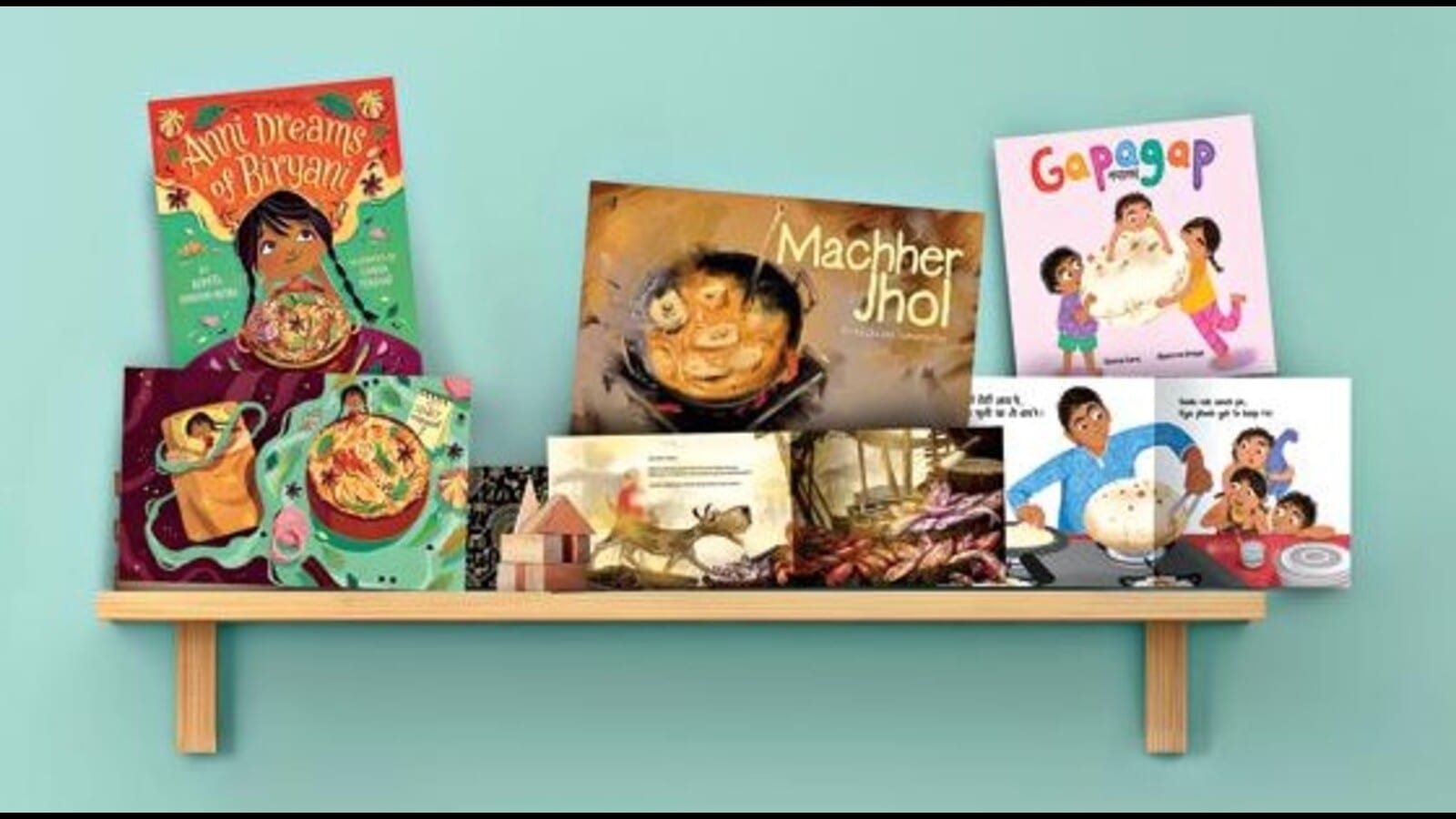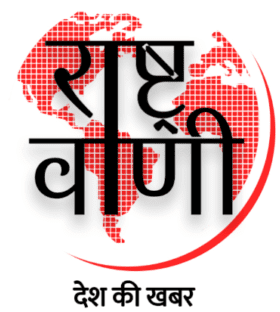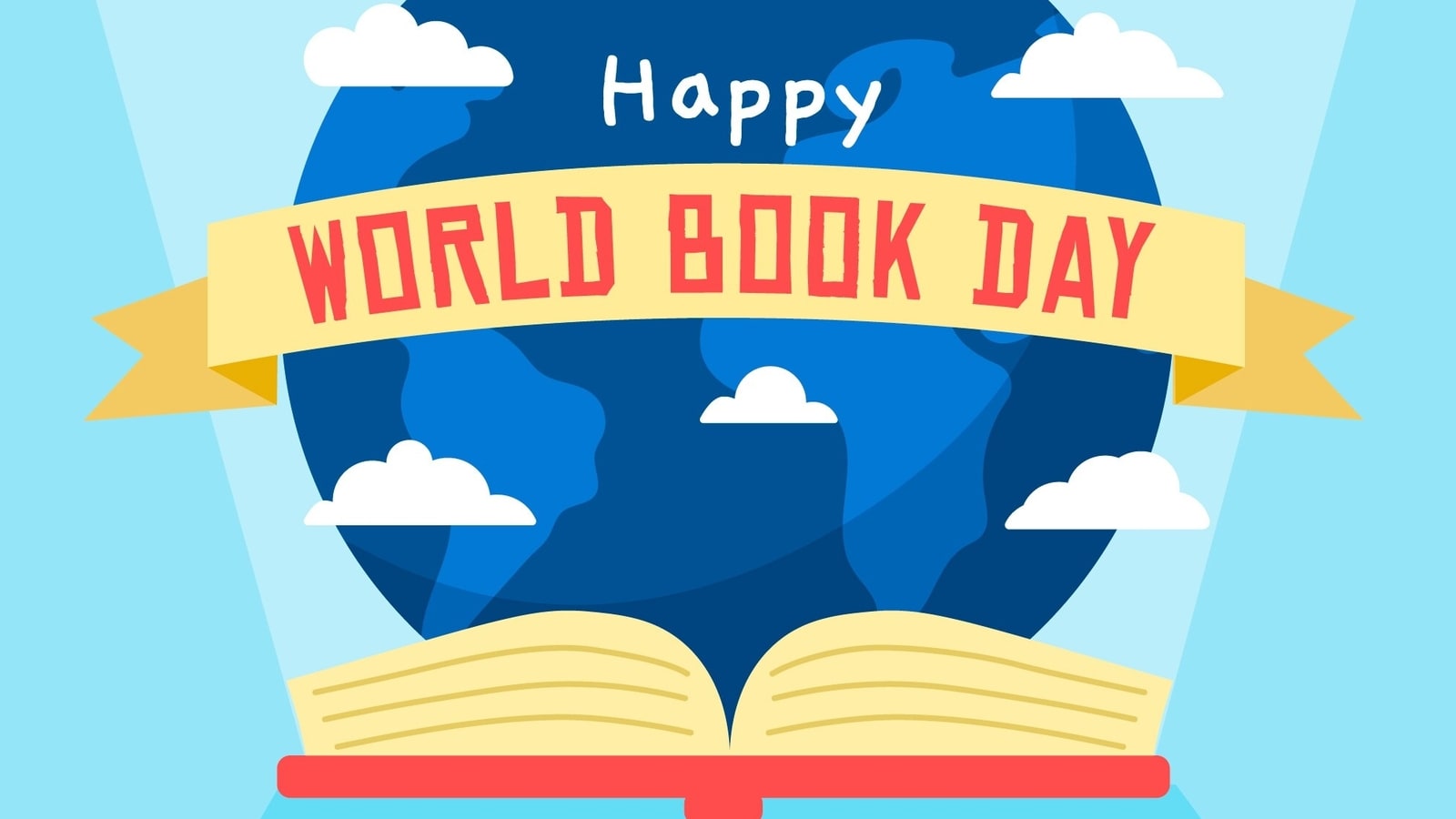
[ad_1]
Indian children’s books in English are finally moving on from scones, tarts and gingerbread men, to rhymes about dosas that sprint off the pan, tales about making the perfect rasam, and letters and shapes learnt via jalebis and pomfrets.
It’s the latest evolution in an arc that began two decades ago, when independent children’s-book publishers took a step away from the colonial- and post-colonial-era iconography of Enid Blyton, venturing into tales of Indian families, customs, festivals and myths instead.
The exploration of local Indian food in children’s stories is part of this larger change, says Sayoni Basu, co-founder of Duckbill publishers and consulting editor at Penguin Random House.
Food played a marginal role in the early hyperlocal attempts. A gastronomically inclined king dreamed up a world of jalebis, with a jalebi moon and jalebi earrings, for instance, in Jalebi Curls (2008; Tulika). And titles by publishers such as Duckbill, Tota and Pickle Yolk folded banana fritters and halwa into tales such as Moin and the Monster (2005) and the Petu Pumpkin series about a child who loved to eat (2012-18).
More recent stories equate food less with playfulness and whimsy and more with memory, longing, identity, loss and love.

“The past decade has seen a growing consciousness among parents, to help their children connect with their roots and their sense of Indianness, especially among families living outside the country,” says Singapore-based author Chitwan Mittal, founder of the children’s publishing house AdiDev Press. It’s what inspired her book, J is for Jalebi (2023). “In child-development pedagogy, it is said that we must take children from the near, to the far — build on what they know before exposing them to newer horizons. So I wanted to introduce my khichdi-, upma- and idli-loving child to the alphabet, in a way that was fun but culturally specific.”
Raviraj Shetty agrees. Books act as mirrors for young readers, says the occupational therapist who works with children and families. “When children are able to see their culture acknowledged, it contributes to their sense of self. This sense of self begins to form when a child is born, so it helps when the early books weave in hyperlocal context too.”
Food is a particularly powerful medium, because cuisine is such a tangible, everyday element of culture. But diversity is vital here, and this is an area where children’s books in India still have room to grow, Shetty adds.
He cites Head Curry (2009; republished by Eklavya) by Mohammed Khadeer Babu as a rare instance of a minority cuisine represented in a food-themed children’s work. It’s a tale about a Muslim family cooking a Sunday lunch of goat’s head. Dalit, Bahujan, Adivasi, Sindhi, Parsi… the cuisines of a greater variety of Indians must be reflected in its literature, he adds.
“It helps if all children can see themselves reflected in stories, and if all children can discover, early on, that there are diverse food habits in the world.”
Context is vital too. Simply swapping scones with samosas won’t do the trick, says Pooja Kadaboina, editor at Karadi Tales. “It is when we imbue the stories with tangible, familiar experiences that food becomes a vehicle through which the tapestry of Indian culture and emotions can be woven into a narrative, inviting young readers to explore their own cultural identities.”
So, when Suma Subramaniam decided to retell the tale of the gingerbread man, tired of children reciting a rhyme about a food they would likely never see or eat, she didn’t just replace the animated, baked runaway treat. She wiped the slate clean and drew instead on the Tamil nursery rhyme Dosai! Amma, Dosai!, for The Runaway Dosa (2023; Little Bee Books).
Read on to see how food is playing a starring role in other recent titles, helping a child navigate the loss of a grandmother through the search for an heirloom recipe (Paati’s Rasam, by Janaki Sabesh and Dhwani Sabesh); using a beloved fish dish as a singular milestone, and a symbol of a blind boy’s love for his father (Machher Jhol, by Richa Jha); allowing an Indian girl in Singapore to trace history through a biryani (Anni Dreams of Biryani by Namita Moolani Mehra); and turning rotis into a singular treat, via a dad in the UK (Gapagap by Sheena Garg).
Moolani Mehra’s next will be a picture book, she says. Veena and the Red Roti: A Story of Hope during Partition is aimed at children aged 4 to 12, and will explore ideas of struggle, identity, perseverance and hope, through the story of a girl from Sindh who gets creative with rotis at a refugee-camp kitchen.
“Food is never just food, is it?” Moolani Mehra says. “It’s the taste of joy, and of belonging.”
Take a look at stories of love, loss, memory, history…
.
The missing ingredient: Paati’s Rasam

To Malli, the rasam made by her Paati (Tamil for Grandmother) always feels like a warm hug.
Someday, Malli; someday I will teach you how to make it, the grandmother tells the little girl.
Then, without warning, the grandmother is gone.
Malli must now try to recreate her Paati’s hugs. But try as she might, she can’t seem to get it right. The little girl turns to her mother; they piece together a recipe, but it isn’t the same.
That’s Paati’s Rasam (Karadi Tales; 2021), written by the mother-daughter duo Janaki Sabesh and Dhwani Sabesh.
In some ways, Malli, with her pigtails and her grief, is both Janaki and Dhwani. “After my mother passed away in 2011, Dhwani never really liked the rasam I made,” Janaki says. “She craved her Paati’s rasam. In a way, this was her love letter to her Paati.”
The duo worked on the book in the pandemic. “Covid-19 brought children very close to the ideas of grief and loss. They couldn’t be shielded from it,” Janaki says. “But they also needed healthy ways to express these emotions, which is not something we generally encourage among children. We hoped that our book might help do this.”
Through the course of their writing, Dhwani also experimented at the stove until she felt she had a rasam recipe that was fairly good. “Of course, it wasn’t exactly Paati’s,” Janaki says. “It never could be.”
So, the recipe for rasam at the end of the book isn’t Paati’s Rasam, it’s Malli’s. “In her grief,” Janaki says, “she finds her own way.”
.
Pot twist: Thukpa for All

Thukpa for All (2018; Karadi Tales) by Praba Ram and Sheela Preuitt is, at its simplest, a love letter to the hot noodle broth beloved across the Himalayan belt. It is also a tale about the power of community, and of food as a creator of community.
The tale follows a boy named Tsering as he heads home from a gompa or Buddhist monastery, dreaming of the thukpa made by his Abi-le (Ladakhi for Grandmother). In his excitement, he invites friends and neighbours over for a bowlful.
At home, he helps prepare a feast by shelling peas, spooning out pepper and cumin, and cutting dough into perfect strips for noodles. Then a power cut in the hills of Ladakh spoils their plans.
Will Tsering, his friends and their neighbours get to taste Abi-le’s famous thukpa? He is determined that they will, and in this the story becomes about a blind boy’s sense of independence and determination. “His enthusiasm and gusto for life are infectious,” Preuitt says.
The book offers a peek into life in the hills, where a casual invitation can turn into a mini-celebration. One neighbour brings some apricot jam and freshly kneaded dough for more noodles. Another brings a flask of steaming butter tea.
In the end, the simmering pot of noodle soup is a community effort, says Ram. “We wanted city kids living in today’s hyperconnected world of games, gadgets and devices, to see the warmth of human connection that communities still hold on to through food.”
Her own favourite food memory, for instance, is squabbling with cousins while polishing off her grandmother’s curd rice, while sitting on her Paati’s kitchen floor, she says, smiling.
In a world in which children may not have as much of that sense of togetherness, laughter and joy in the simple things, “we wanted to offer a reminder that it is still out there.”
.
In search of a special curry: Machher Jhol

There’s a reason little Gopu counts his steps. He can’t see, so the numbers tell him where he must be.
Except now, his Baba is ill and he wants to surprise him with a bowl of his favourite fish curry. In author-publisher Richa Jha’s Machher Jhol (2018; Pickle Yolk; illustrated by Sumanta Dey), Gopu travels far beyond the 742 steps that mark the furthest he had so far been from home.
Guided by the bustle of buses and trams, and the aromas of fish, chai and red chillies — the “city’s song” as his Baba puts it — he stops to buy fish, takes a tram to his Dida’s (Grandmother’s) house, and asks if she can please make him some of her beloved machher jhol.
The mustard is ground, the red chilli seeds splutter, the fish sizzles in hot oil. The fragrant dish is finally ready, and Gopu counts the steps home to his Baba, who is furious that he has snuck away. All he does then is open the dabba of fish curry.
“Before he knew it, Baba had wrapped him in his arms.
‘Who will believe you can’t see, Gopu… How did you do it alone?’
‘I had you with me, Baba; you have shown me everything!’ said Gopu.”
Food, Jha says, is so vital, not just to sustain us, but to comfort us too. “This is a dish that ends up bringing all three generations together.”
In the process, Gopu grows up a little bit too. That was always part of the plot.
.
Spice roots in Singapore: Anni Dreams of Biryani

Namita Moolani Mehra was, for a couple of years, a freelance food writer with the Michelin Guide. She spent some of this time traipsing around Singapore looking for culinary gems.
One of these was undoubtedly a small eatery that specialised in biryani, and was a seven-time winner of the Michelin Bib Gourmand Singapore Award. “The owner was so confident of his recipe, the quality,” Moolani Mehra says fondly.
He would talk about how his children were not interested in taking the business forward. The family recipe, it seemed, would die with him, he would say. Well, something of his beloved dish is now immortalised in her book, Anni Dreams of Biryani (2022; Two Lions).
Little Anni, who loves to cook, attempts to crack a secret biryani recipe made by a surly restaurateur on her street, so she can have it every day. She tries and tries, but can’t come close. Even in her dreams, she mulls changes that might yield that perfect aroma. But this is a 200-year-old recipe; it is unlikely she will just guess the details.
She pesters the surly chef with questions until he drives her away. She is about to give up, when she hears that the restaurant is closing.
What follows is a story of a girl who starts out wanting what she wants, but eventually wants to give back too.
As the story unfolds, Anni finds, in addition to delicious food, community and culture.
Food is a way to get children to examine the world around them, Moolani Mehra says. “Food is never just food, is it? It’s the taste of joy, hope and belonging.”
.
An unlikely pairing: Biji’s in the Kitchen

Natasha Sharma’s real-life Biji (Punjabi for Paternal Grandmother) couldn’t cook at all. Her lauki halwa glued people’s teeth together; bhindi arrived still slimy, in a puddle-coloured curry, she says, laughing.
What Biji could do was innovate. She immersed rosogollas in curd for a creamy, chewy dessert; paired fresh mango with hot aloo parathas. “I was lucky to have a grandmother like her,” Sharma says.
In her book Biji’s in the Kitchen (2023; Duckbill), Sharma writes of a grandmother much like her own, who equates food with freedom: “She would dream of (the paratha and mango) mishmash when she stayed hungry for many days with other people on a hunger strike. This was their polite way of saying, ‘Leave’, to the people who weren’t letting our country be free.”
She and the other fighters prevail; her country is finally free. Life moves on, as it tends to do. Biji continues to fail rather spectacularly at her attempts to cook, but her granddaughter is never in want of a treat. She just hops onto her motorcycle and takes the little girl to hidden joints scattered across their town. She knows where to find the best lassis and pakoras. They eat out of leaf bowls.
“Biji is not like other grandmothers, and that’s a good thing. I want children to know that all grandmothers don’t cook well, that some might not even like to cook. But they each have their own language of love,” Sharma says.
.
Eating up the alphabet: J is for Jalebi

In Chitwan Mittal’s picture book J is for Jalebi (AdiDev Press; 2021), fluffy idlis, piping hot khichdi, a mound of yakhni pulao and vadas swimming in sambar take over from the ball, the cat and the dog, introducing children to the alphabet.
In many ways, the book is an ode to her five-year-old foodie son, says Mittal. When he was three, she was keen to introduce him to picture books. She recalls walking into bookstores in Singapore, where they live, and feeling like the options on the shelves simply wouldn’t work. The images looked like they had been downloaded off the internet, or were entirely alien to his world, she says.
She decided to make her own book for him. Should she use colours, animals? “Food! That was the hook, I realised. My son already loved good food.”
Mittal, who has run the Gurugram-based publishing house AdiDev Press since 2020, teamed up with artist Ambika Karandikar to illustrate words that were already part of his vocabulary, and his menu.
Each food sketch — the titular jalebi, a glass of milk, a pair of coconuts — is accompanied by a sketch of children engaging with the ingredient. A little girl giggles with the glass, and a white milk moustache. One child uses the coconuts as tablas.
“Children are really tickled by the way the little characters in the book play with each food item,” Mittal says.
Up next for the publishing house: A seek-and-find board book called 1, 2, 3… Idlis in a Sambhar Sea by Ashwitha Jayakumar, which aims to introduce children to numbers, through iconic dishes from cities across India.
.
The dough-getters: Gapagap

Rotis are quite the affair at author-publisher Sheena Garg’s home in Manchester. Her daughters, aged six and two, always turn to their father, Pratik Waghela (a cyber-security consultant, incidentally), for the perfect kind. As he mixes, kneads and rolls out the dough, they invariably try to help.
When she decided to create another picture book, she decided to immortalise these memories, and tell a slightly different story — an update on the memory most children have, of getting their hands sticky with dough, as they made rotis for the first time with their mother.
These are the kinds of stories Garg, a management consultant, lives to tell. She set up Haathi Tales in 2021, to diversify the kinds of stories available to immigrant children. “That idea was born when my daughter asked me why she looks different from others. I felt picture books would help children like her feel more seen,” she says.
Gapagap (Hindi for Gulp; 2023; with illustrations by Alankrita Amaya) is particularly precious to her, Garg says, because these are not memories that her daughters share with their peers. There aren’t many Indians in their class; a range of cultures is represented in their social circle, but rotis do not play a big role.
“I’m hoping that seeing rotis — which are regularly eaten in our homes — in a book will make them an object of cultural importance, even aspirational. A lot like how we grew up wanting to eat scones,” she says. “Whether it is the roti or other Indian foods that we tend to take for granted, on some level, they should think, ‘Oh, this matters.’”
[ad_2]
Source link








